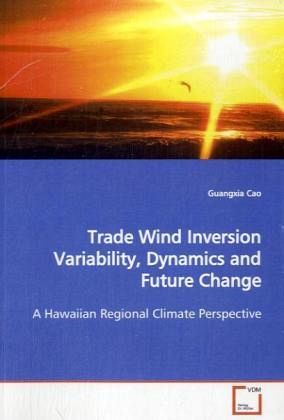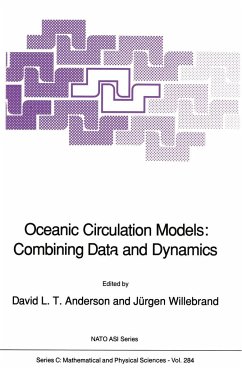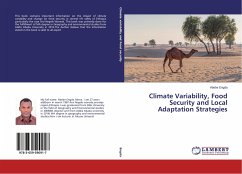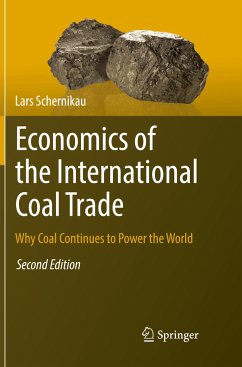
Trade Wind Inversion Variability, Dynamics and Future Change
A Hawaiian Regional Climate Perspective
Versandkostenfrei!
Versandfertig in 6-10 Tagen
39,99 €
inkl. MwSt.

PAYBACK Punkte
20 °P sammeln!
The trade wind, as the name implied, powered thetrade of ancient mariners. It also supplies theenergy for the circulation of the tropical andsubtropical atmosphere, known as the Hadleycirculation. The trade wind inversion (TWI), an airlayer that is several hundred meters thick at analtitude of a few hundreds to a few thousands meters,is the prevailing feature of the trade winds,guaranteeing the energy source for theHadley circulation. Within the TWI, the airtemperature increases, in contrast to the generaltrend of decreasing temperatures with increasedaltitude in the troposphere. The TWI creat...
The trade wind, as the name implied, powered the
trade of ancient mariners. It also supplies the
energy for the circulation of the tropical and
subtropical atmosphere, known as the Hadley
circulation. The trade wind inversion (TWI), an air
layer that is several hundred meters thick at an
altitude of a few hundreds to a few thousands meters,
is the prevailing feature of the trade winds,
guaranteeing the energy source for the
Hadley circulation. Within the TWI, the air
temperature increases, in contrast to the general
trend of decreasing temperatures with increased
altitude in the troposphere. The TWI creates a
division, with relatively dry air above and moist air
below. Therefore the TWI is particularly important
for the vertical vegetation distribution of tropical
mountain ecosystem. This book explores how the TWI
may change in a future climate based on the data from
the Hawaiian region. It will be of interest for
those concerned with the environmental impact of
climate change in the tropics and subtropics.
trade of ancient mariners. It also supplies the
energy for the circulation of the tropical and
subtropical atmosphere, known as the Hadley
circulation. The trade wind inversion (TWI), an air
layer that is several hundred meters thick at an
altitude of a few hundreds to a few thousands meters,
is the prevailing feature of the trade winds,
guaranteeing the energy source for the
Hadley circulation. Within the TWI, the air
temperature increases, in contrast to the general
trend of decreasing temperatures with increased
altitude in the troposphere. The TWI creates a
division, with relatively dry air above and moist air
below. Therefore the TWI is particularly important
for the vertical vegetation distribution of tropical
mountain ecosystem. This book explores how the TWI
may change in a future climate based on the data from
the Hawaiian region. It will be of interest for
those concerned with the environmental impact of
climate change in the tropics and subtropics.












